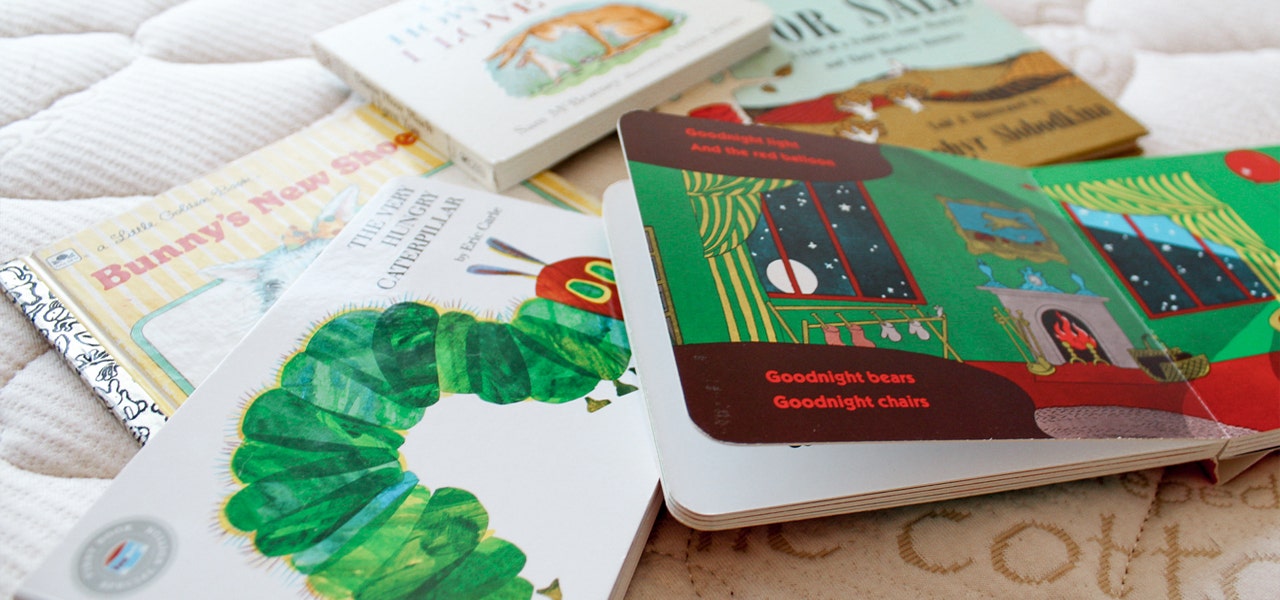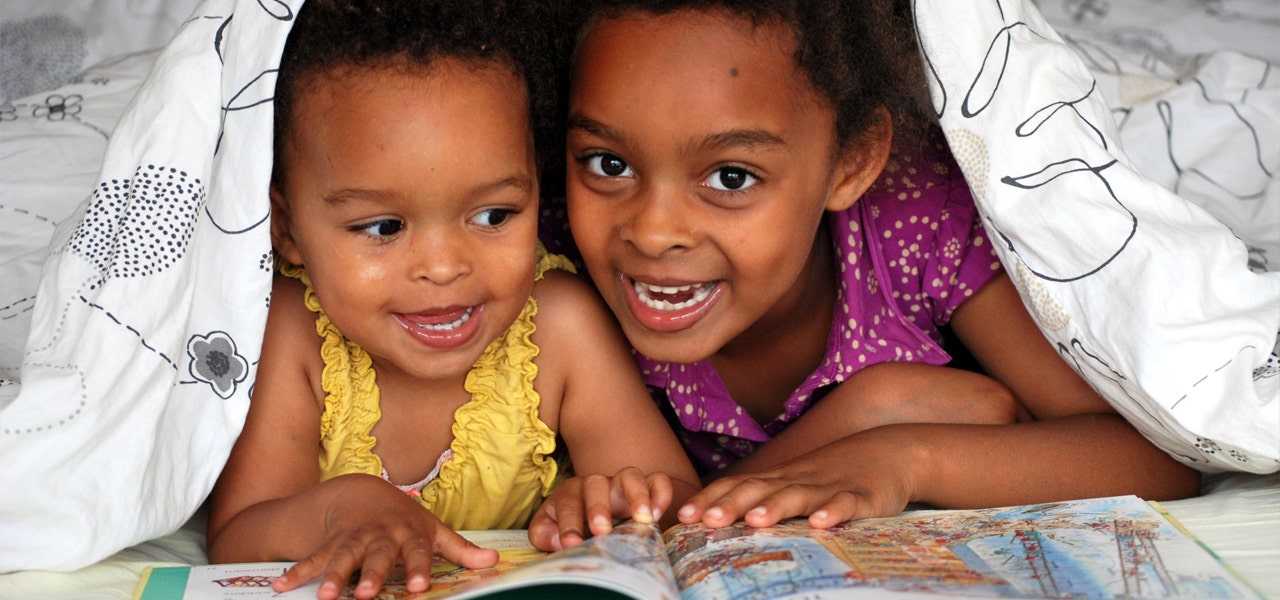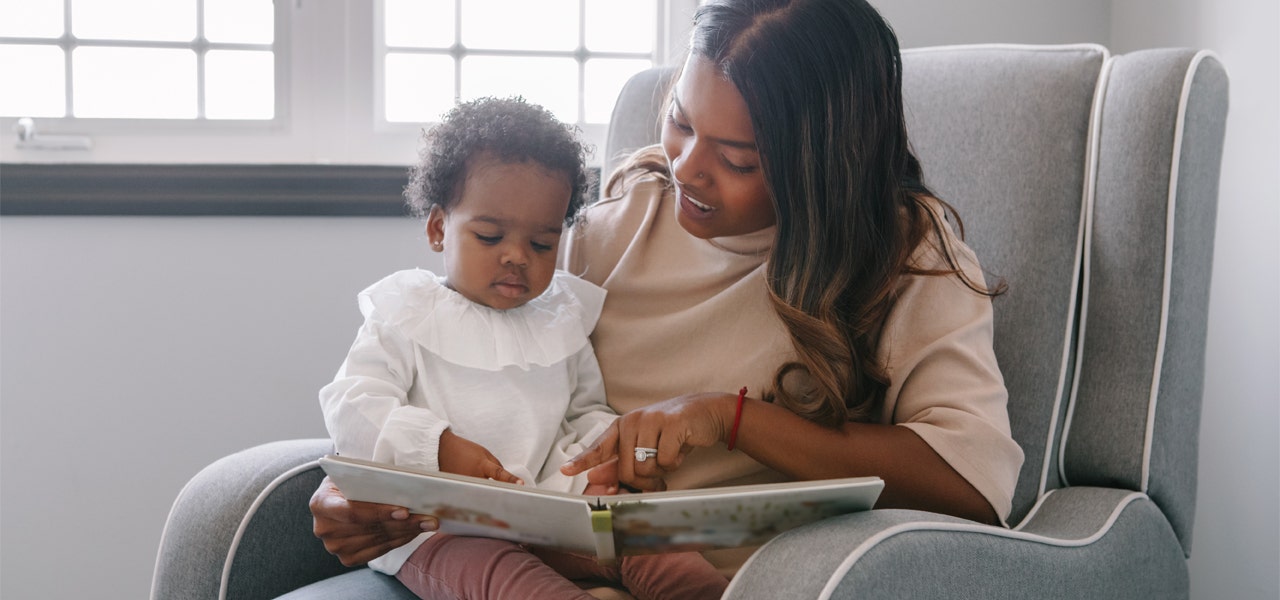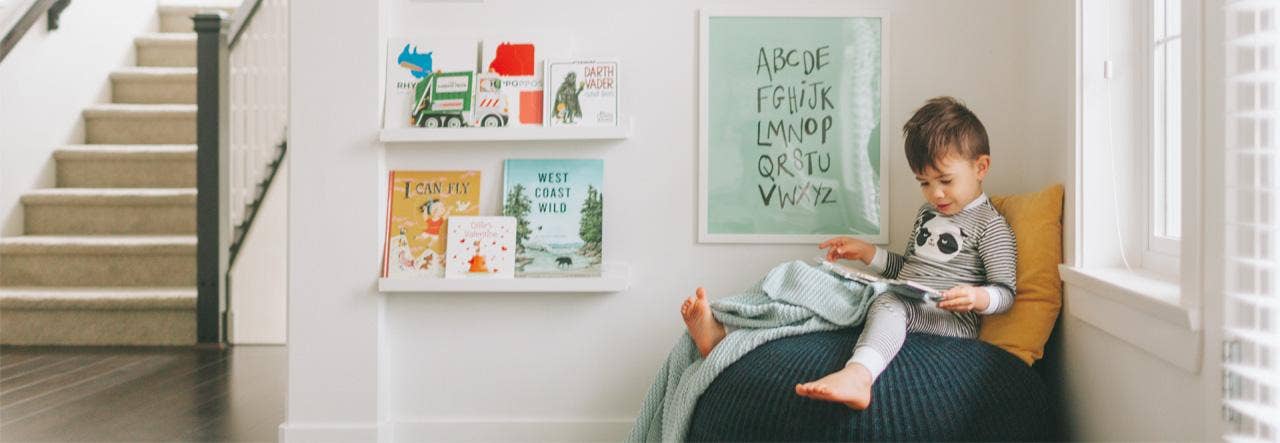Ah, bedtime stories. What ritual of bedtime is more ingrained in our kids than this? Bedtime stories inspire dreams, teach important lessons and make sleepytime fun.
But at Naturepedic, we’re not just in the business of sleep. We’re also in the business of family and sustainability. And what better way to teach the youngest members of our families about sustainability than through our cherished bedtime stories?
Childhood is the perfect time to introduce the concept of sustainability. Habits formed now have lasting effects on our children who are, after all, our future. We’ve cataloged our top five environmental children’s books to get your little one started. But first, a little info on why bedtime stories are the best.
Benefits of Reading Before Bedtime


The cozy ritual of a bedtime story does more for your child than wind them down for slumber. Here are just a couple reasons you should be reading a story to your little one before turning out the light.
Jumpstart to Education
Reading books to a child, beginning as early as infancy, can boost their vocabulary and reading skills for many years to come. It stimulates the brain, which decreases hyperactivity and allows for higher quality sleep – time for your little one’s body and brain to learn and grow. Reading also helps them to develop important listening skills, and when you’re a kid, listening is learning!
Because of this, reading aloud gives children a head start in their education – and consistency is key. What better way to be consistent than to establish a bedtime routine of reading?
Reading Is Fun – Not a Chore!
It’s normal for kids to resist bedtime. Playtime is over, and lights out can be scary. Reading right before bedtime can be a way to sort of, well, trick your little one’s brain into holding reading at a high value.
Think about it. Your child is going to want to prolong whatever activity comes before bedtime if they don’t want to go to bed. And when we want to do things longer, it usually means that we like them. This creates a positive association between your little one and reading. And that association eventually can work both ways – if bedtime involves reading, maybe bedtime isn’t so bad.
Even More to Explore
If we sat here and told you all the ways reading before bed helps your child to learn and grow, you’d be here reading for hours – talk about a bedtime story! So, here’s a quick rundown of some other potential reasons to keep reading to your little one:
- To improve concentration
- To encourage sleep
- To introduce practical skills
- To inspire the imagination
- To contextualize morality
- To strengthen your relationship
- To offer choices


Why Reading Is the Perfect Introduction to Sustainability
Children’s brains are constantly absorbing knowledge and learning new behaviors – it’s what helps them grow! When we read to our little ones, we give them a window through which to glance at experiences outside of their own. It builds emotional intelligence, critical thinking skills and empathy.
Environmental children’s books, books about climate change and books about pollution can help kids to internalize the mindset of wasting less and protecting nature – habits they will hopefully carry into adulthood. Beyond environmental concerns, learning about sustainability and the role each and every person plays in it is a great way to teach our children consideration and responsibility.
5 Books that Teach Kids Sustainability
If you’re interested in teaching your kids about eco-friendly living in a way they’ll grasp and enjoy, check out our top picks for children’s books about the environment.
1. Old Enough to Save the Planet by Loll Kirby
This beautifully illustrated book tells of 12 children from around the globe who are shaping the planet with their initiatives.
It’s an inspiring read because it proves that anyone can help tackle climate change – no matter how old you are, how big you are or where you are from. Stories from around the globe help to open your child’s eyes to people of all different cultures and races. And, the stories deliver practical, actionable tips for how your little one can start working towards a greener future – both at school, at home and in the world. Buy it here!
2. Charlie and Lola: We are Extremely Very Good Recyclers by Lauren Child
Charlie and Lola books are a time-tested hit with kids. Featuring silly dialogue and eye-catching, collage-like illustrations, these books are especially effective for how memorable they are – for you and your children!
In this particular chapter of Charlie and Lola’s adventures, Lola is on a quest to win a local recycling competition – the prize being her very own sapling to plant. This story provides plenty of practical recycling tips for little ones, which makes it great for not only teaching kids what recycling means, but also inspiring them to start recycling. Buy it here!
3. 10 Things I Can Do to Help My World by Melanie Walsh
This is one of our favorite environmental children’s books because it gives kids actionable steps they can take to go green, all on their own.
With helpful and easy suggestions that children of many sizes, ages and backgrounds can manage, such as using both sides of the paper when drawing or coloring and turning off the water while brushing teeth, this book helps children feel like they’re contributing – and also gets them to apply eco-friendly practices from a young age. Habits formed during development tend to stick. Buy it here!


4. The Lorax by Dr. Seuss
Another time-tested classic that probably needs no introduction: The Lorax is a rhyming tale that teaches kids that “unless someone like you cares a whole awful lot, nothing is going to get better. It’s not.”
This particular line is memorable for any reader because it puts the onus on you. Not only should you care, but you need to care – the future of the world depends on you. That alone is enough to keep sustainability on the brain … but the colorful illustrations, fun world building and catchy rhyming help, too. Buy it here!
5. Just a Dream by Chris Van Allsburg
This is the story of a boy who travels to the future to discover a world where trees are cut down for one single toothpick, where pollution is so bad that the Grand Canyon can’t be seen, where countless cars are stuck in a never-ending traffic jam. As an adult, it’s almost haunting to read.
But because of his journey, the young boy realizes how important it is to keep the planet healthy. It teaches children that the choices they make now affect the world of tomorrow. And it forces the question: what do I want that world to look like? Buy it here!
Some of these choices may seem pretty deep for children’s books. But, our little ones are the bright, imaginative future of the world – and they’re capable and curious when it comes to caring. So dig in, share with friends and keep the conversation going – leading up to Earth Day and always!
 BABY
BABY  KIDS
KIDS  ADULT
ADULT  LEARN
LEARN  STORES
STORES 